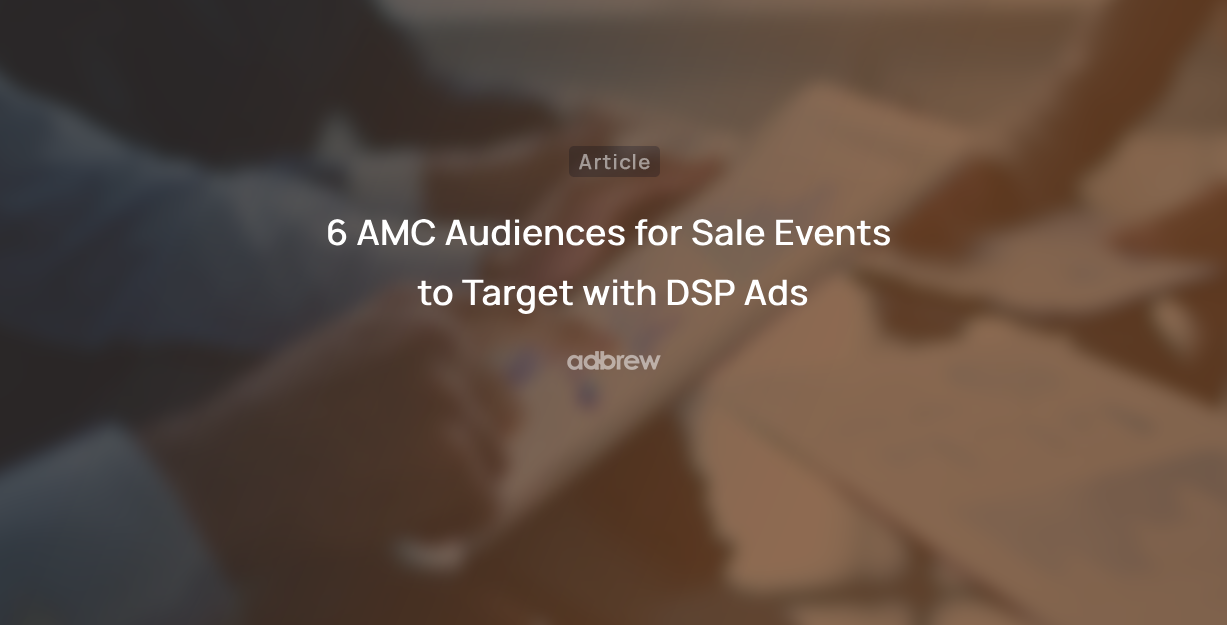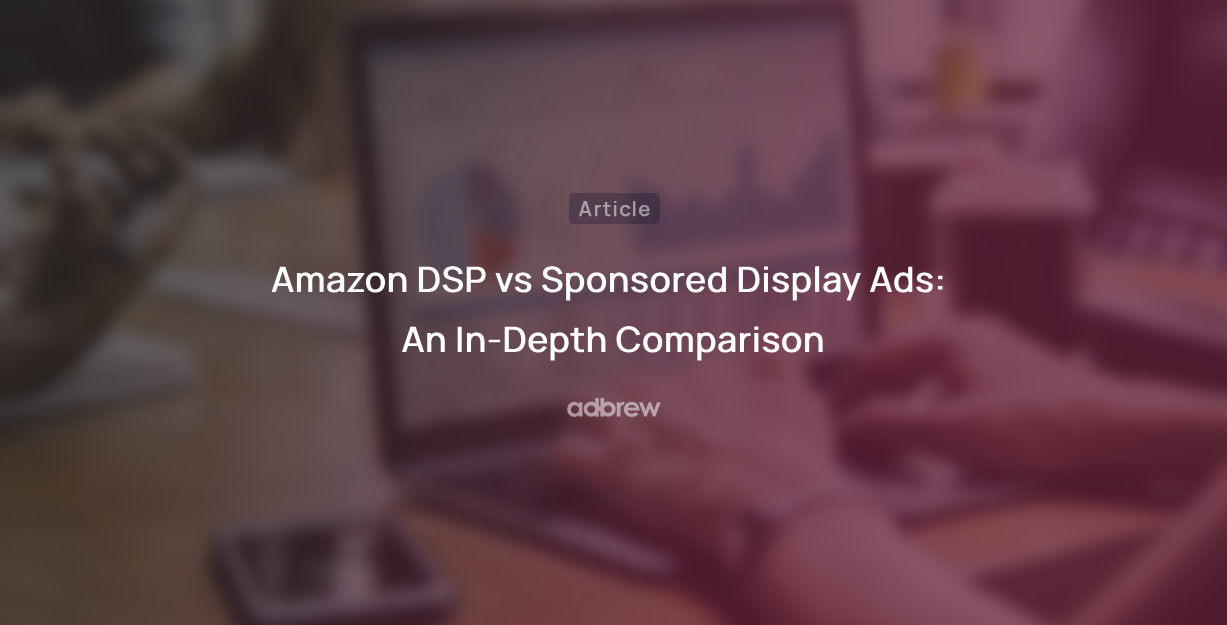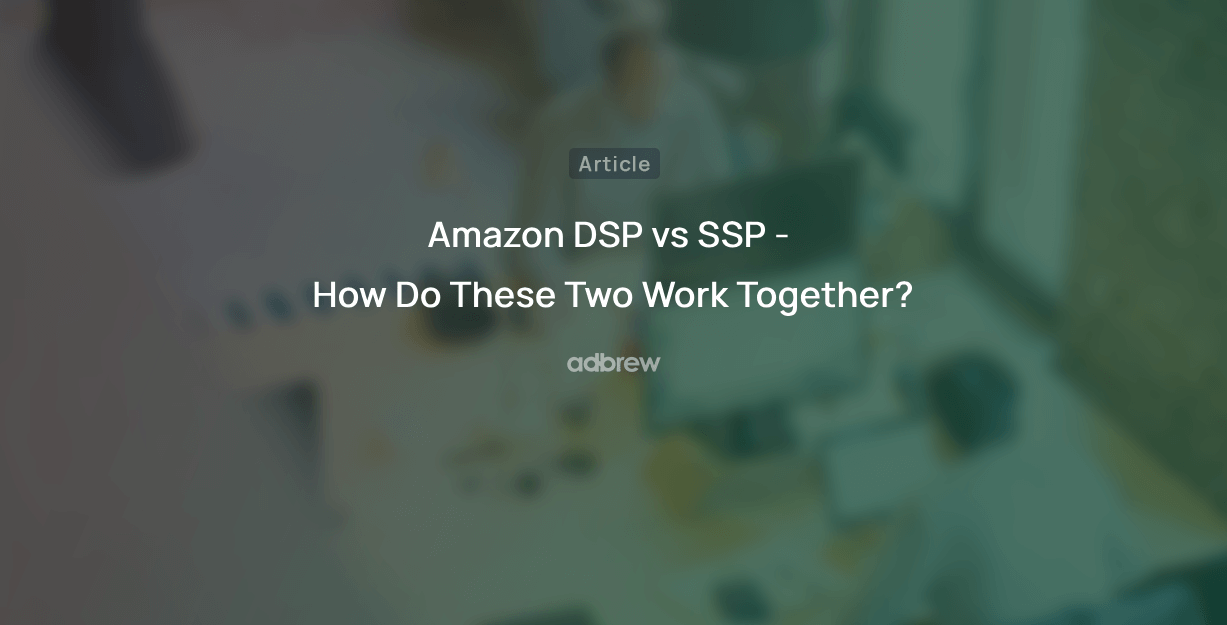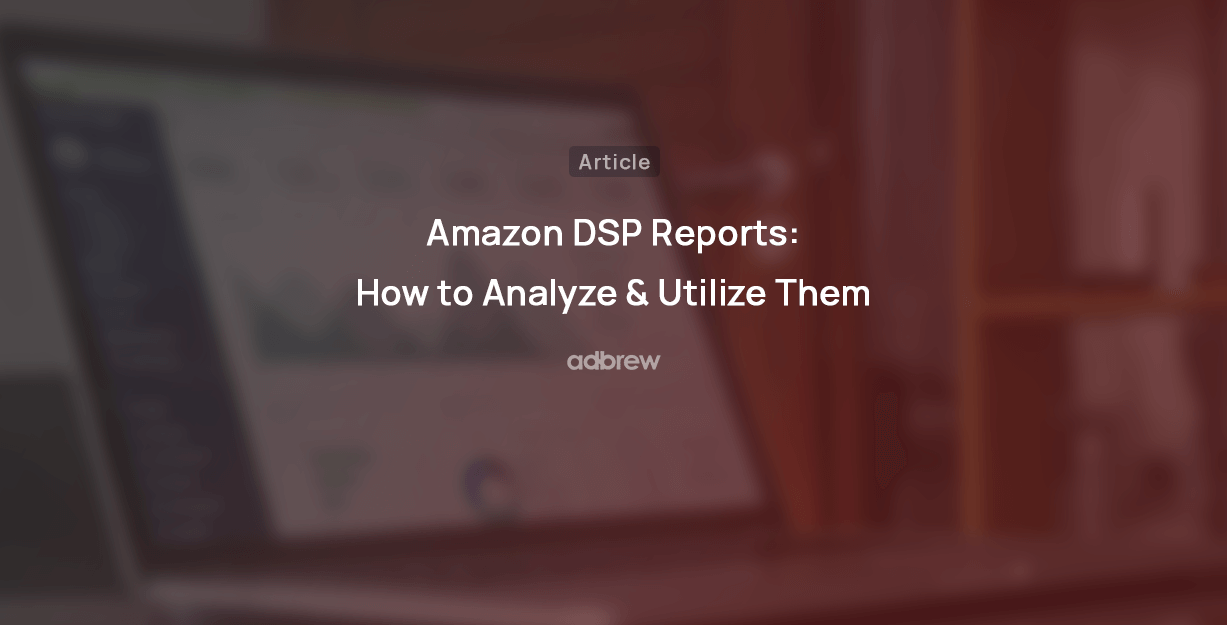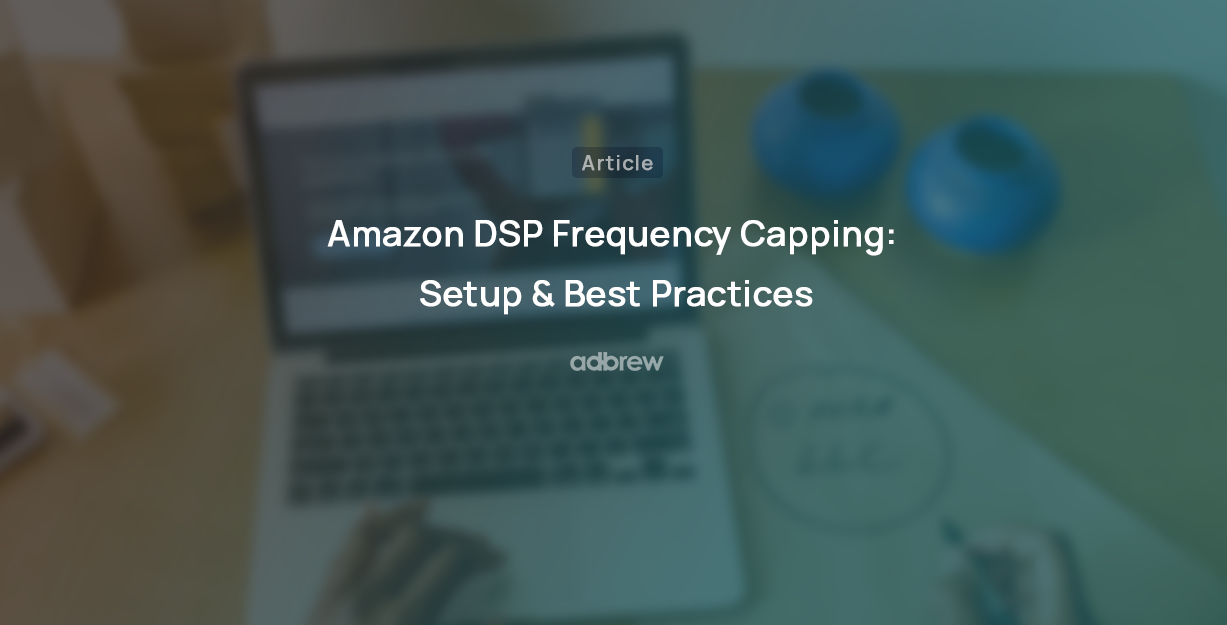
In digital advertising, Amazon DSP has emerged as a powerful tool for businesses to connect with their target audience and achieve their marketing objectives.
A crucial decision that shapes the success of an Amazon DSP campaign is the selection of an appropriate Amazon campaign bidding strategy.
In this blog, we will learn about different Amazon DSP bid strategies, providing insights into their functionalities, applications, and the factors that influence their effectiveness.
What are Amazon DSP Bid Strategies?
Amazon DSP’s bid strategy is a data-driven approach that utilizes algorithms to predict the likelihood of an ad impression leading to desired outcomes. Various models, trained on historical data and input features, enable the system to adjust bids for ad placements, bidding more aggressively for impressions likely to result in conversions and less for those less likely to convert.
Types of Amazon DSP Bidding Strategies:
There are two types of Amazon DSP bid strategies:
- While spending the full budget, maximize performance
- Prioritize KPI Target (previously Maximize performance)
Let’s understand each strategy in detail:

1. While spending the full budget, maximize performance
With the “While spending the full budget, maximize performance” strategy, the Amazon DSP bidding algorithms give priority to budget delivery and second priority to campaign performance.
You might use this strategy in the following cases:
- You have a set budget for your entire campaign and need to spend it all within a certain period.
- You want to automate your bids because you don’t have the time or resources to manage them manually.
- You prefer to spend your budget evenly each day, even if it means you could get better results by spending more on certain days.
Therefore, this strategy is an ideal option for brands with strict budget requirements, limited resources, and limited time.
How does this strategy work?
This strategy considers three factors to determine the bids. They are:
Pacing Score
The pacing score is a measure of how well an ad line is spending its budget compared to its desired delivery schedule. Amazon DSP calculates the pacing score by comparing the actual budget spent with the target budget set for the ad line.
Amazon DSP raises bids for all impressions when an ad line is underdelivering to help the ad line spend its budget more quickly. This is because Amazon DSP wants to ensure that advertisers can spend their maximum campaign budget to achieve their goals.
Max Bid
The maximum bid is the most important part of this strategy. If you set it too low, you may only be able to participate in auctions for low-value inventory, which will make it hard to scale your campaign. To scale your campaign and participate in high-value auctions, you need to set a higher maximum bid.
But it’s important to understand that a higher maximum bid doesn’t automatically mean you’ll get higher eCPMs. It can make it more likely that you’ll be able to bid competitively in auctions that are expected to perform better, but it’s not a guarantee.
In other words, don’t just set your maximum bid as high as possible. You need to find a balance between being competitive and not overpaying for inventory.
Flighting Setting
This option will evenly distribute your budget throughout the day and flight, ensuring that you spend your full budget and maintain a consistent pace of spending.
Few Cases where this strategy would be useful
Here are a few scenarios where the “while spending full budget, maximize performance” bid strategy can help optimize campaigns and be a good choice:
Return on Investment for Launching a New Product
Picture this: you’re introducing a new product, and you have a set budget to spend by the end of the month. While making more people aware of the product is important, you also want to make sure that you get good value for the money you’re putting in.
Managing Multiple Campaigns
A marketing agency is running hundreds of campaigns for a client. They want to make things more efficient by reducing the manual work needed to optimize campaign budgets while still maximizing ad spend ROI.
Ready to get started with Adbrew?
Adbrew provides cutting-edge automation, expertly curated strategies, and data-driven insights to manage your DSP campaigns
2. Prioritize KPI Target (Maximize Performance)
The “Prioritize KPI Target” bid strategy aims to get the best results for your campaign based on a set bid amount. Performance here is judged by the specific goal you’ve chosen, like ROAS or conversions.
This strategy is ideal when:
- Your budgets can be adjusted as long as your campaigns perform well.
- You’re okay with the day-to-day spending of your campaign being inconsistent as long as it improves performance.
- You have time to regularly check and adjust bids to keep your campaign on track.
In conclusion, the “Prioritize KPI Target” bid strategy is the best option to achieve your campaign goals. However, it is important to understand that this bidding strategy requires more monitoring and management than other bid strategies. If you are willing to put in the extra effort, “Prioritize KPI Target” can be a great way to get the most out of your advertising budget.
How does this strategy work?
This strategy considers various factors while deciding the bids for an auction, which are:
Base Bids:
Amazon aims to optimize your campaign’s performance through the base bid using machine learning models. The system actively bids higher for impressions with a higher likelihood of conversions and less aggressively for those with a lower chance of converting.
Submitted Bids:
Submitted bids are figured out by taking your base bid and factoring in the estimated chance of a conversion from the incoming impression.
Delivery Expectations:
If you choose “maximize performance,” your campaign isn’t focused on spending the entire budget. The ad line budget is more like a maximum limit.
Other Factors:
Things like viewability, audience, and frequency cap can also be considered in this process.
Few Cases where this strategy would be useful
Achieving Goal KPI:
Suppose an advertiser has historically employed the “while spending full budget, maximize performance” bid strategy but falls short of reaching their ideal Key Performance Indicator (KPI). In this case, they could use the “Prioritize KPI Target” bid strategy as this strategy prioritizes performance overspending the budget.
Minimum ROAS:
In this scenario, the advertising agency is incentivized to achieve good results for their client because they will only be paid if they do not exceed a certain ROAS threshold. The “Prioritize KPI Target” bid strategy is a good choice for this scenario because it is designed to help advertisers achieve the best possible results for their budget.
Final Thought
In conclusion, Amazon DSP offers two primary bid strategies: “While spending the full budget, maximize performance” and “Prioritize KPI Target.” The former automates bids to utilize the entire budget efficiently while the latter focuses on performance optimization, requiring more hands-on management but providing control over bid values. Both strategies use machine learning algorithms to predict conversion likelihood. Advertisers should choose based on their objectives, understanding that each strategy demands a unique approach and level of campaign management.
Recent Posts
Amazon DSP Ads Optimization Software

Related Blogs
With the advent of Amazon Marketing Cloud (AMC), optimizing ad campaigns has become more versatile than ever. One notable feature […]
Amazon DSP, a Demand-Side Platform, allows advertisers to target audiences accurately using Amazon’s extensive shopper data. But before starting a […]
Amazon’s Demand-Side Platform (DSP) has become a game-changer for advertisers seeking to reach a massive audience of engaged shoppers. However, […]
Having spent considerable time working with Amazon DSP ads, we’ve observed a common challenge: achieving and measuring optimal results from […]
Are you a non-Amazon seller looking to tap into the power of Amazon’s advertising network? Amazon DSP, their Demand-Side Platform, […]
Sale events are all about reaching the right customers at the right time. But with so many promotions bombarding shoppers, […]
Amazon offers two different display advertising options for sellers: Sponsored Display ads and Amazon DSP ads. Selecting the right one […]
In today’s digital world, building a strong online brand is crucial for businesses of all sizes. While Amazon advertising solutions […]
Amazon Demand Side Platform unlocks programmatic advertising across many channels in the vast Amazon ecosystem and beyond, but often gets […]
Feeling trapped in the challenges of Amazon Sponsored Ads? Limited to engaging only with customers actively searching for your brand […]
If you are selling on Amazon, having a well-crafted remarketing strategy in place becomes crucial. Imagine re-engaging with potential customers […]
In digital advertising, Amazon DSP has emerged as a powerful tool for businesses to connect with their target audience and […]
Unlike Sponsored Ads, Amazon DSP offers the flexibility to run campaigns that guide users to either Amazon or non-Amazon destinations. […]
Whether you’re an advertiser seeking to connect with engaged shoppers worldwide or a publisher looking to monetize your ad inventory […]
Are you just starting with Amazon DSP (demand side platform) and feeling a bit lost in how to create Amazon DSP campaigns? We […]
Are you an e-commerce business owner looking for new and interesting methods to reach out to potential customers? Look no […]
We all utilize many different DSP ad types and targeting options available to advertisers in Amazon DSP. But how do […]
Amazon DSP (demand side platform) provides a multitude of targeting options, ranging from customer demographics, and behavioral targeting to contextual […]
Every advertiser wants their ads to reach a broad audience. However, showing an ad too many times to one person […]
With more and more shoppers turning to Amazon for online shopping, it is obvious why brands don’t want to limit […]






